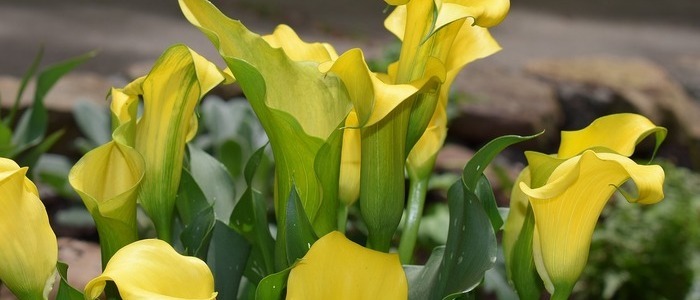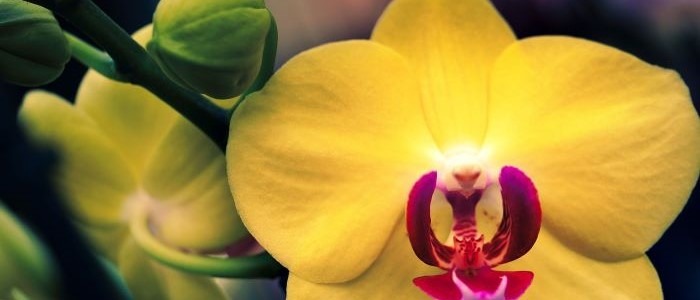Yellow Bells (Tecoma stans) is a perennial shrub native to Mexico that is known for its showy, bright yellow flowers and long flowering season. This low-maintenance plant can reach heights of up to 10 feet and grows best in full sun and well-drained soils. It’s a popular landscape choice due to its attractive flowers and ability to attract hummingbirds, making it a great addition to any garden.
The ease of care for the yellow bells makes it ideal for gardeners of all skill levels. Those with minimal gardening experience will find this shrub easy to care for, while experienced gardeners will delight in its beauty and resilience. If you’re looking for an eye-catching plant that’s both easy to maintain and full of color, Yellow Bells (Tecoma stans) is the perfect option.
Whether you’re looking for a colorful accent or border plant in your garden or just want something unique that will bring some life into your outdoor space, Yellow Bells (Tecoma stans) has you covered. With its bright yellow blooms that attract hummingbirds, this versatile perennial shrub is sure to add a pop of color and character to any outdoor space.

Yellow Bells Frequently Asked Questions
Are yellow bells a herb or shrub?
Yellow bells are actually a shrub rather than a herb. They are characterized by their woody stems and multiple branches, which can grow to several feet tall. The yellow bells shrub produces beautiful trumpet-shaped flowers that can range in color from yellow to orange, adding beauty and vibrancy to any garden or landscape.
Are yellow bells a popular house plant?
Yes, yellow bells are a popular house plant because they are relatively low-maintenance and can adapt well to different lighting conditions,. This makes them an attractive choice for indoor gardening enthusiasts. With proper care and regular pruning, yellow bells can make a stunning addition to any indoor space.
Planting and Caring for Yellow Bells
Planting and caring for Yellow Bells (Tecoma stans) is an easy and rewarding task for gardeners of all skill levels. The first step to ensure success is to choose the right location. Yellow Bells prefer partial to full sun exposure, depending on the climate, so make sure the spot you select gets at least six hours of direct sunlight per day.
When it comes to planting your Yellow Bells, it’s important to make sure that the soil has good drainage. If you have heavy clay soil, then consider mixing in some organic matter or compost before planting. This will help ensure that your Tecoma stans plants get adequate nutrition and moisture throughout their life cycle.
Once planted, make sure that you water your yellow bells regularly – ideally with rainwater or non-chlorinated water if possible. Make sure not to over-water them, as this can cause root rot in wet climates. In addition, prune your Tecoma stans plants after they flower in order to encourage bushiness and promote more flowers in the future seasons.
Fertilize your yellow bells once a year during late winter or early spring with a balanced fertilizer such as 10-10-10 or 12-12-12. This will help provide your plants with essential nutrients for healthy growth and blooming flowers throughout the season! With proper planting and care techniques, you can be sure that your Yellow Bells will thrive all summer long!
Growing Dwarf Tecoma Stans Indoors
Bringing a cheerful splash of yellow into your home is easy and hassle free with the Dwarf Tecoma Stans. In order to ensure the success of these indoor plants, however, there are several essential points to take into account.
First off, you’ll want to pick an ideal location for your Yellow Bells where they can receive plenty of direct sunlight. A south-facing window that gets at least six hours daily will provide them with the best chance of growth and survival in an indoor setting. Similarly, make sure that you select a potting mix containing soil, peat moss, vermiculite or perlite which will assist with drainage and maintain acidic pH levels between 5.5-6.5 – tests should be done regularly to check this remains constant.
The key to keeping these plants in shape is providing them with regular watering sessions; while not overwatering is important in preventing root rot or other diseases from developing, it’s also essential that they remain moist by watering lightly but frequently during their growing season. Fertilizing once or twice over the same period using a diluted all-purpose fertilizer should also help keep them healthy and blooming well throughout the year – prune back stems just above where leaves branch off after flowering has finished in late summer/early fall for a neat shape!
It’s also advisable to allow enough space between each plant indoors as overcrowding can lead to increased risk of disease weakening them over time and reducing both bloom production potential and overall lifespan too. With these few simple steps you can have beautiful displays of Yellow Bells brightening up your living space all year round!
Common Pests and Diseases of Yellow Bells
Yellow Bells (Tecoma stans) are relatively easy to care for, but there are some common pests and diseases that can affect the plant. Knowing how to identify and take preventative measures against these problems is key to keeping your plants healthy and happy.
Aphids, mealybugs, and scale insects are all common pests of yellow bells. Aphids are small, soft-bodied insects often found on the underside of leaves or at the base of stems. Mealybugs feed on sap from stems and leaves, while scale insects form protective shells over their bodies as they feed on the plant’s sap. All three pests can be controlled with horticultural oil sprays or insecticidal soap sprays.
Leaf spots, root rot, and powdery mildew are some of the more common diseases of yellow bells. Leaf spots appear as small dark circles on the foliage while root rot is caused by overwatering or poor soil drainage leading to a weakened root system and wilted foliage. Powdery mildew is a white fungal growth that appears on leaves which can cause leaf drop if left untreated. All these issues can be combatted with a combination of proper watering practices, good air circulation around plants, and by removing any dead or diseased foliage from the garden bed immediately.
It is important to regularly check for signs of pests or diseases in order to stay ahead of any potential issues that could arise with your yellow bells plants. Carefully inspect each plant weekly for any signs of infestation or disease damage – look closely at both sides of each leaf as well as under leaf petioles (stalk connecting leaf blade to stem).
Additionally, it is also essential to practice proper watering techniques such as avoiding overhead sprinkling when possible as this can increase chances of fungal infections like powdery mildew due to high humidity levels created by wet foliage. If you follow all these tips diligently then you should have no trouble keeping your Yellow Bells healthy and happy!
How to Propagate Yellow Bells (Tecoma stans)
Propagating Yellow Bells (Tecoma stans) is a simple and rewarding process that will bring you beautiful blooms year after year. The best time to propagate is in the late spring or early summer, when temperatures are warm and sunny. Before you begin propagating, it’s important to select healthy stems with at least three sets of leaves and no signs of disease or pests.
Once you have chosen your stems, cut them at a 45-degree angle using sharp scissors or shears. Allow the cuttings to dry for about 15 minutes before planting in a potting mix with acidic pH levels between 5.5-6.5. It’s important that your cuttings receive adequate light and moisture for them to take root successfully; keep them out of direct sunlight but provide bright, indirect light as well as regular watering until they become established.
After four weeks, once the cuttings have taken root and grown new leaves, can be transplanted outdoors into well-draining soil in an area with partial shade and plenty of air circulation. When transplanting outdoors, water thoroughly and add mulch around the base of the plant for additional insulation during cold weather months.
To ensure success when propagating Yellow Bells (Tecoma stans), it’s important that you pay attention to the details – from selecting healthy stems to providing ample light and moisture while they are taking root – but once they become established they are sure to give you years of enjoyment with their bright yellow flowers and ability to attract hummingbirds!
Conclusion
In conclusion, Yellow Bells (Tecoma stans) are a beautiful and easy-to-care for perennial shrub that can bring a burst of color to any outdoor space. With the right location, soil, and care, these plants can be a stunning addition to any garden. This article has provided readers with a comprehensive guide to growing and caring for Yellow Bells, from choosing the right location and soil to preventing pests and diseases.
To get the most out of their Yellow Bells, readers should take advantage of the resources provided in this article such as links and further information. We also invite readers to leave comments and give feedback on their own experiences with Yellow Bells so that we can continue to provide helpful advice on growing and caring for this beautiful plant.
Yellow Bells are hardy plants that will thrive with minimal effort when given adequate light, water, nutrients, warmth, air circulation, room for growth over time, pruning after flowering is complete and attention paid towards controlling pests or diseases. Following these steps will ensure success when growing these wonderful plants indoors or outdoors in any climate zone.
With proper care throughout its life cycle including fertilizing once a year during dormancy as well as regular watering during active growth periods – your tecoma stans will bloom every year full of fragrant yellow blossoms sure to delight friends and family alike!
Other Yellow House Plants













